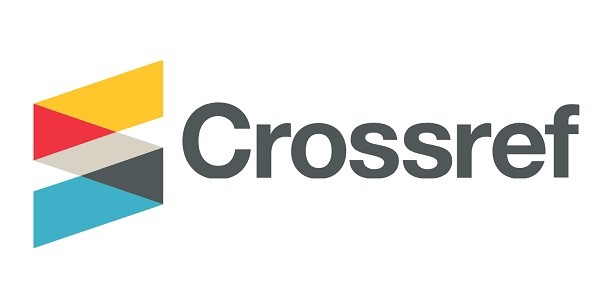The Effects of Human Crowding and Store Messiness on Consumer Visit Intention: A Post Pandemic Study
DOI:
https://doi.org/10.31384/jisrmsse/2023.21.1.3Keywords:
Human crowding, store messiness, perceived contamination, departmental stores, Pakistan, Covid-19Abstract
Attraction towards decorated and tidy places is an innate human trait. The visit to well-organised places is more frequent whether for shopping or regular outings. This study aims to determine how environmental cues, such as human crowding and disorganised isles and shelves, influence the consumer intention to visit a departmental store in Pakistan in the post-covid era. The study investigates the mediating role of consumer-perceived contamination. The data was gathered from 298 participants in Karachi who frequently shopped at departmental stores. The collected data was analysed using PLS- SEM, and the results indicated that store messiness has a negative impact on consumer visit intention, which is mediated by perceived contamination. The results also showed that human crowding has a direct negative relationship with consumer visit intention, regardless of the consumer perceived contamination. It was suggested that managers should focus on enhancing the environment of the store to provide an exclusive shopping experience to the consumers and make use of strategies centered on improving environmental cues to mitigate the challenges associated with perceived contamination in the post- covid era.
Downloads
References
Abbas, G. (2021). Pakistan’s e-commerce market size was up Rs25bn YoY in Q1FY21. [online],. Retrieved from https://profit.pakistantoday.com.pk/2021/02/11/pakistans-e-commerce-market-size-up-rs25bn-yoy-in-q1fy21/
Ali, S., Khalid, N., Javed, H. M. U., & Islam, D. M. Z. (2020). Consumer Adoption of Online Food Delivery Ordering (OFDO) Services in Pakistan: The Impact of the COVID-19 Pandemic Situation. Journal of Open Innovation: Technology, Market, and Complexity, 7(1), 10–10. DOI: https://doi.org/10.3390/joitmc7010010
Baek, E., & Oh, G. E. G. (2021). Diverse values of fashion rental service and contamination concern of consumers. Journal of business research, 123, 165–175. DOI: https://doi.org/10.1016/j.jbusres.2020.09.061
Bossuyt, S., Kenhove, P. V., & Bock, T. D. (2016). A dirty store is a cost forever: The harmful influence of disorderly retail settings on unethical consumer behavior. International Journal of Research in Marketing(1), 225–231. DOI: https://doi.org/10.1016/j.ijresmar.2015.12.005
Castaldo, S., Penco, L., & Profumo, G. (2021). Cruising in the COVID-19 pandemic era: does perceived crowding really matter? International Journal of Contemporary Hospitality Management, 33(8), 2586–2612. DOI: https://doi.org/10.1108/IJCHM-07-2020-0688
Castro, I. A. (2018). Customer purchase intentions and choice in food retail environments: a scoping review. International journal of environmental research and public health, 15(11), 24–93. DOI: https://doi.org/10.3390/ijerph15112493
Coskun, M., Gupta, S., & Burnaz, S. (2019). Human crowding and store messiness: Drivers of retail shopper confusion and behavioral intentions. Journal of Consumer Behaviour, 18(4), 313–331. DOI: https://doi.org/10.1002/cb.1772
Coskun, M., Gupta, S., & Burnaz, S. (2020). Store disorderliness effect: shoppers’ shoppers’ competitive behaviors in a fast-fashion retail store. International Journal of Retail & Distribution Management, 48(7), 763–779. DOI: https://doi.org/10.1108/IJRDM-06-2019-0193
Dangelico, R. M., Schiaroli, V., & Fraccascia, L. (2022). Retrieved from https://doi.org/10.1 002/sd.2322
Du, W., Fang, D., Ye, Y., & Qiu, S. (2020). The influence of disorderly environment on consumers’ reference for boundaries: The mediating effect of personal control. Journal of Contemporary Marketing Science, 3(1), 17–31. DOI: https://doi.org/10.1108/JCMARS-08-2019-0031
Fornell, C., & Larcker, D. F. (1981). Structural Equation Models with Unobservable Variables and Measurement Error: Algebra and Statistics. Journal of Marketing Research, 18(3), 382–388. DOI: https://doi.org/10.1177/002224378101800313
Furrer, O., Liu, B. S. C., & Sudharshan, D. (2020). The effect of store atmospherics and crowding on customer behavior: Mediating role of perceived contamination. Journal of Retailing and Consumer Services, 55, 102102–102102.
Geisser, S. (1974). A predictive approach to the random effect model. Biometrika(1), 101– 107. DOI: https://doi.org/10.1093/biomet/61.1.101
Gold, A. H., Malhotra, A., & Segars, A. H. (2001). Knowledge management: An organi- zational organisational capabilities perspective. Journal of management information systems, 18(1), 185–214. DOI: https://doi.org/10.1080/07421222.2001.11045669
Gupta, S., & Coskun, M. (2021). The influence of human crowding and store messiness on consumer purchase intention-the role of contamination and scarcity perceptions. Journal of Retailing and Consumer Services, 61. DOI: https://doi.org/10.1016/j.jretconser.2021.102511
Hair, J., Hult, G., Ringle, C., & Sarstedt, M. (2014). A Primer on Partial Least Squares Structural Equation Modeling (PLS-SEM). Los Angeles: SAGE Publications.
Hair, J. F., Hult, G. T. M., Ringle, C. M., & Sarstedt, M. (2022). A Primer on Partial Least Squares Structural Equation Modeling (PLS-SEM) (3rd Ed ed.; and others, Ed.). Sage: Thousand Oaks. DOI: https://doi.org/10.1007/978-3-030-80519-7
Hazée, S., & Vaerenbergh, Y. V. (2020). Customers’ Customers’ contamination concerns: an integrative framework and prospects for service management. Journal of Service Management, 32(2), 161–175. DOI: https://doi.org/10.1108/JOSM-04-2020-0129
Henseler, J., Ringle, C. M., & Sarstedt, M. (2015). A new criterion for assessing discriminant validity in variance-based structural equation modeling. J. of the Acad. Mark. Sci, 43, 115–135. DOI: https://doi.org/10.1007/s11747-014-0403-8
Henseler, J., Ringle, C. M., & Sinkovics, R. R. (2009). The use of partial least squares path modeling in international marketing. New challenges to international marketing. DOI: https://doi.org/10.1108/S1474-7979(2009)0000020014
Kim, J., & Mattila, A. S. (2021). The mediating role of perceived cleanliness on the relationship between store design and trust. Journal of Business Research, 126, 74– 82.
Kim, W. G., & Mattila, A. S. (2018). Understanding the effect of physical environmental cues on consumer behavior in grocery stores. Journal of Retailing and Consumer Services, 41, 177–185.
Li, X., Dahana, W. D., Ye, Q., Peng, L., & Zhou, J. (2021). How does shopping duration evolve and influence buying behavior? The role of marketing and shopping environment. Journal of Retailing and Consumer Services, 62, 102607–102607. DOI: https://doi.org/10.1016/j.jretconser.2021.102607
Lucia-Palacios, L., Pérez-López, R., & Polo-Redondo, Y. (2018). Can social support alleviate stress while shopping in crowded retail environments. Journal of Business Research, 90, 141–150. DOI: https://doi.org/10.1016/j.jbusres.2018.05.018
Lucia-Palacios, L., Perez-Lopez, R., & Polo-Redondo, Y. (2020). How situational circumstances modify the effects of frontline employees’ competences on customer satisfaction with the store. Journal of Retailing and Consumer Services, 52, 101905– 101905. DOI: https://doi.org/10.1016/j.jretconser.2019.101905
Meersseman, E., Geuens, M., & Vermeir, I. (2021). Take a Bite! The Effect of Bitten Food in Pictures on Product Attitudes, Purchase Intentions, and Willingness to Pay Foods, 10(9), 2096. DOI: https://doi.org/10.3390/foods10092096
Moharana, T. R., & Pradhan, D. (2019). Shopping value and patronage: when satisfaction and crowding count. Marketing Intelligence & Planning, 38(2), 137–150. DOI: https://doi.org/10.1108/MIP-07-2018-0264
Nunes, M. F., Park, C. L., & Shin, H. (2021). Corporate social and environmental irresponsibilities in supply chains, contamination, and damage of intangible resources: A behavioral approach. International Journal of Production Economics, 241, 108275– 108275. DOI: https://doi.org/10.1016/j.ijpe.2021.108275
Pantano, E., Pizzi, G., Bilotta, E., & Pantano, P. (2021). Shopping with (out) distancing: modeling the personal space to limit the spread of contagious disease among consumers in retail stores. Journal of Marketing Management, 1–19. DOI: https://doi.org/10.1080/0267257X.2021.2003422
Park, J. Y., & Han, J. K. (2021). The impact of in-store shopping experiences on the store loyalty of apparel retail customers. Sustainability, 13(3), 1081–1081.
Parsad, C., Prashar, S., Vijay, T. S., & Sahay, V. (2019). Role of In-Store Atmospherics and Impulse Buying Tendency on Post-Purchase Regret. Journal of Business & Management, 25(1).
Rafique, A., Akram, N., Talha, U. S. M., Khan, M. U., Zia, R., & Aamir, M. (2022). Retrieved from https://www.researchsquare.com/article/rs-1716250/latest.pdf
Stone, M. (1974). Cross-Validatory Choice and Assessment of Statistical Predictions. Journal of the Royal Statistical Society: Series B (Methodological), 36(2), 111–133. DOI: https://doi.org/10.1111/j.2517-6161.1974.tb00994.x
Tanwar, D., & Nangia, R. (2018). Retail store atmospherics in India. IAHRW International Journal of Social Sciences Review(6), 2049–2051.
Underhill, P. (2011). What women want: The science of female shopping? Simon and Schuster.
Wann, D. L., & James, J. D. (2018). Sports fans: The psychology and social impact of fandom.Routledge. DOI: https://doi.org/10.4324/9780429456831
Yang, J., Luo, J. M., & Yao, R. (2022). How fear of COVID-19 affects the behavioral intention of festival participants-A case of the HANFU Festival. International Journal of Environmental Research and Public Health, 19(4). DOI: https://doi.org/10.3390/ijerph19042133
Published
How to Cite
Issue
Section
License
Copyright (c) 2023 Syed Muhammad Fauzan Ali, Karamatullah Husseiny , Aamir Adam

This work is licensed under a Creative Commons Attribution 4.0 International License.
Copyright: The Authors














